Trend Alert : Drip Rails
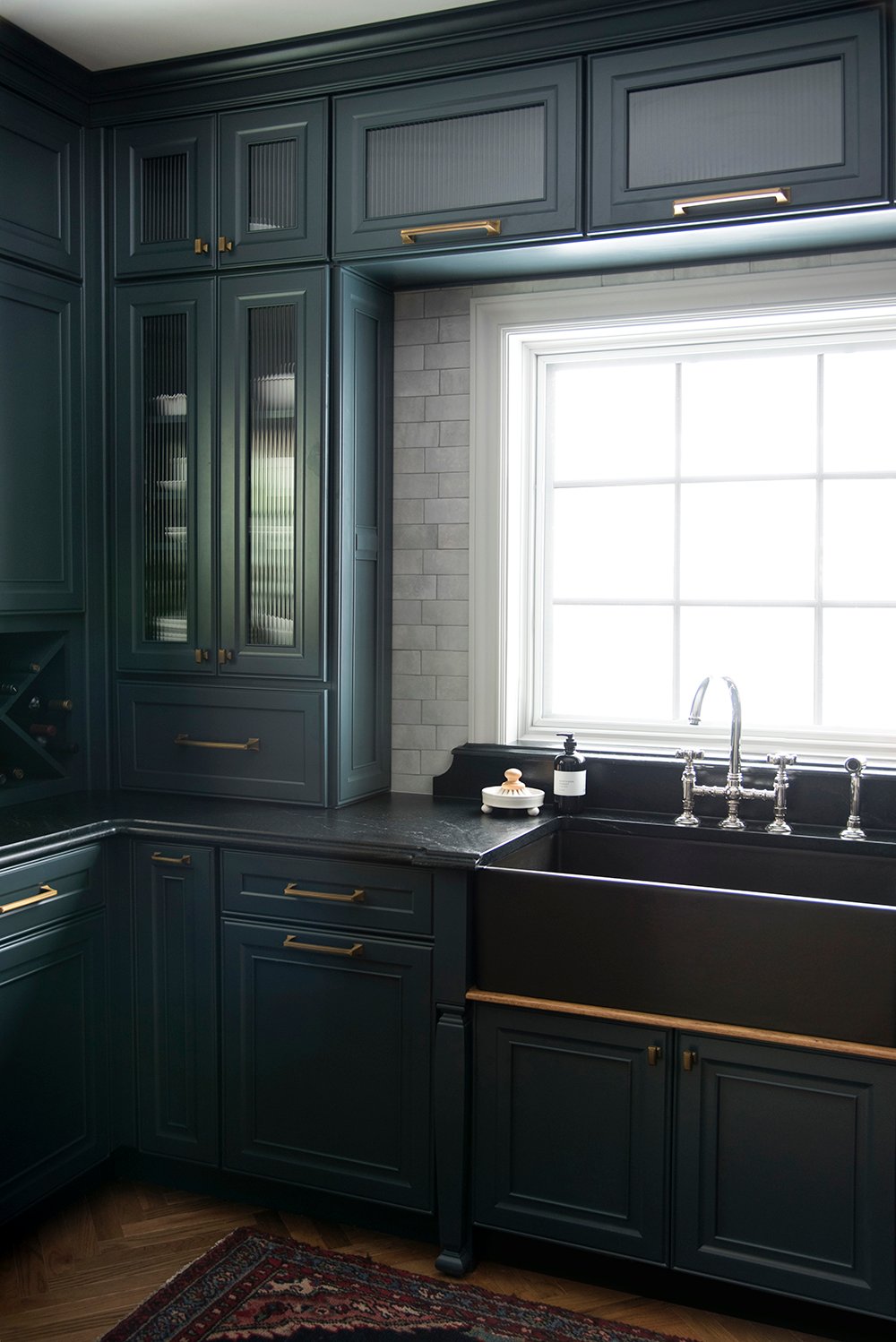 Let’s chat about a practical kitchen design trend I’m predicting will be on the rise in the coming year… drip rails. If you have no idea what I’m talking about, that’s a-ok. I’m about to explain and profess my love for the drip rail because I have one in our newly renovated kitchen and am loving it (from a practicality AND aesthetic perspective). I’m not certain if I’m noticing more of them because I have one of my own now, or if more designers are incorporating these into their kitchen design plans. Regardless, I am SO on board. Click through for the latest Trend Alert post, learn about drip rails, and get lots of incredible inspiration for incorporating one into your own kitchen.
Let’s chat about a practical kitchen design trend I’m predicting will be on the rise in the coming year… drip rails. If you have no idea what I’m talking about, that’s a-ok. I’m about to explain and profess my love for the drip rail because I have one in our newly renovated kitchen and am loving it (from a practicality AND aesthetic perspective). I’m not certain if I’m noticing more of them because I have one of my own now, or if more designers are incorporating these into their kitchen design plans. Regardless, I am SO on board. Click through for the latest Trend Alert post, learn about drip rails, and get lots of incredible inspiration for incorporating one into your own kitchen.
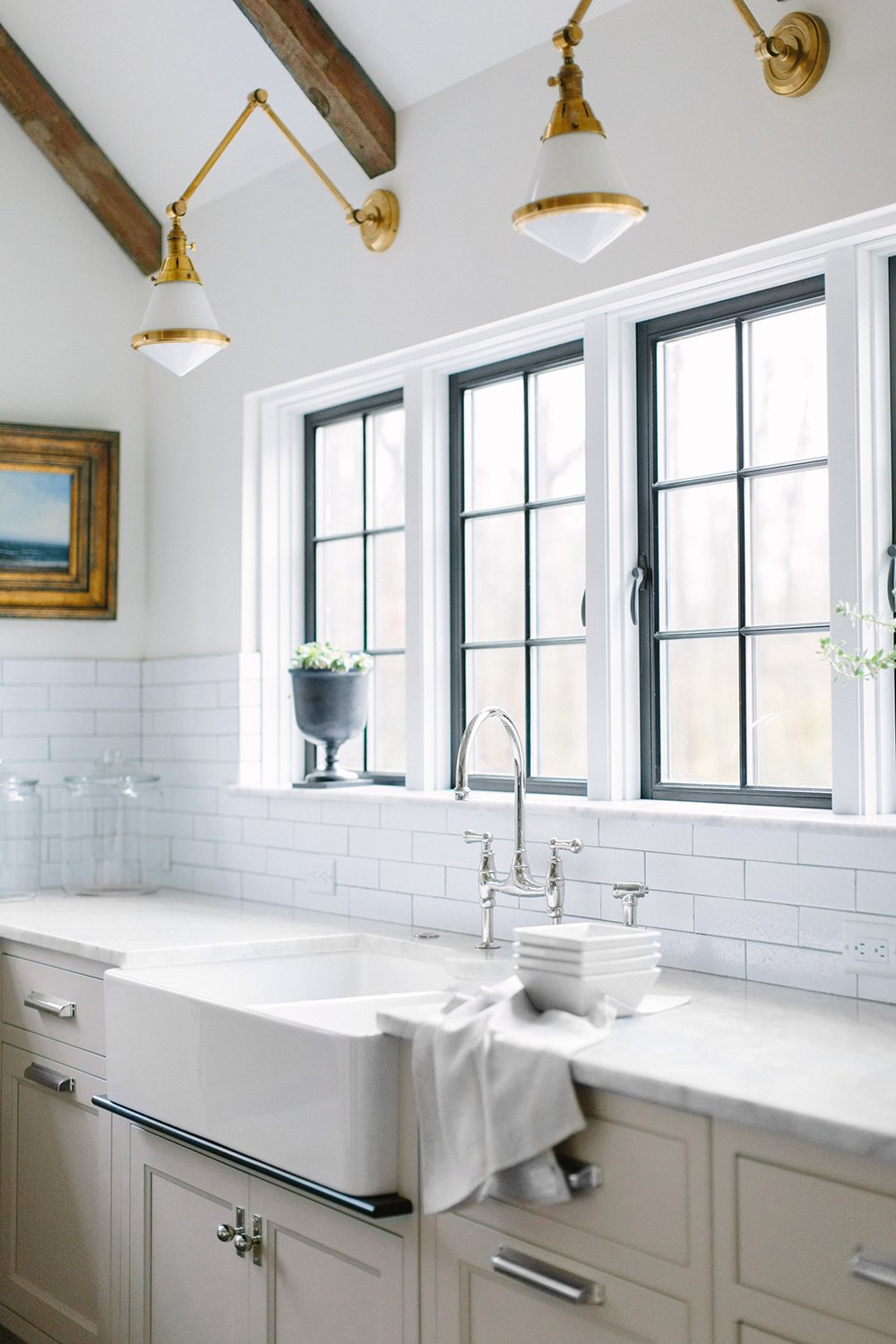
I first decided I wanted a drip rail in my kitchen after seeing the above space by the incredible Jean Stoffer. She is a true innovative design queen and I love every single thing that lady does! I really liked the look of a contrasting piece that made the farmhouse sink feel more intentional and helped to break up the millwork and cabinetry.
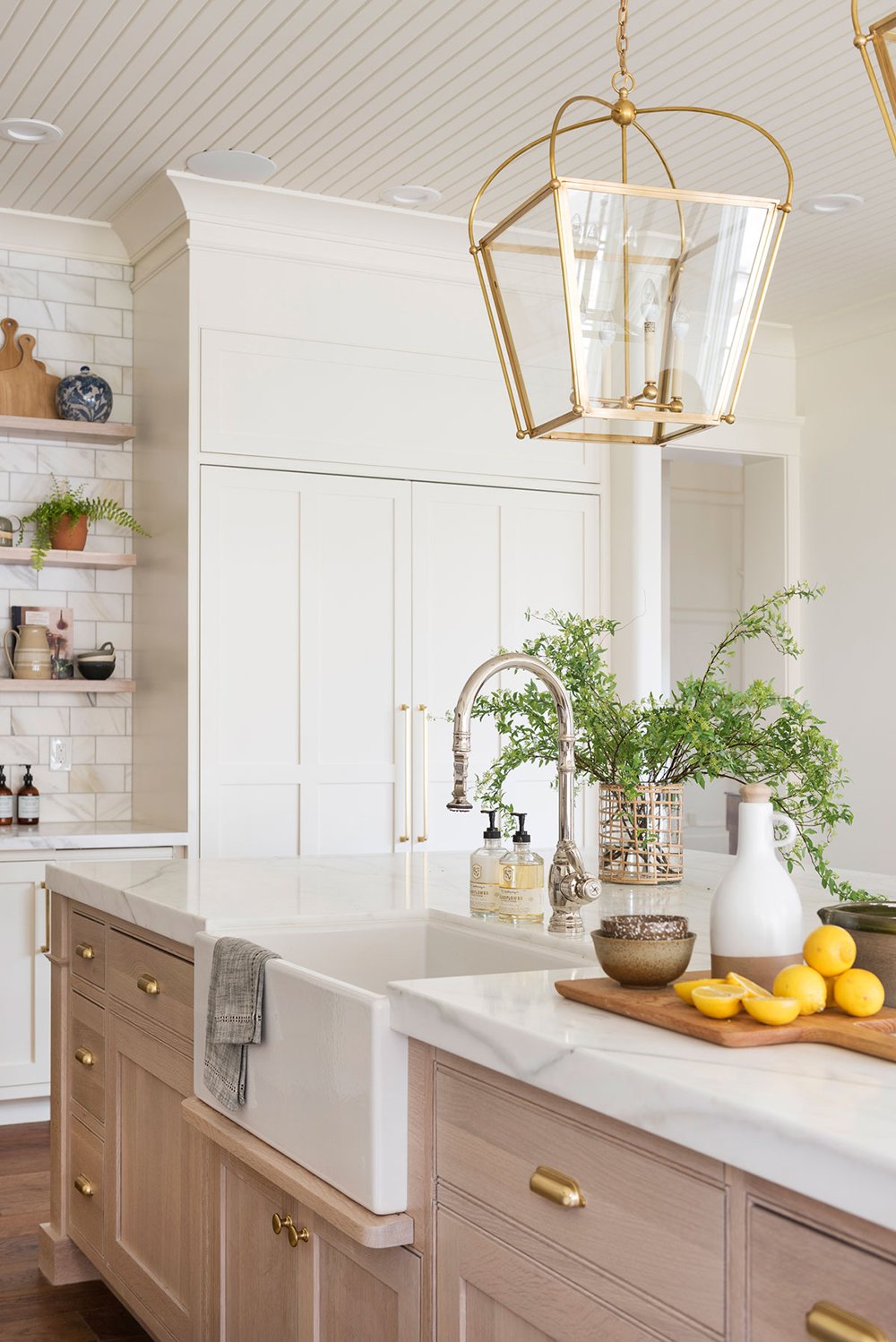
Now… it doesn’t always have to be in contrast with the cabinets. Above, Studio Mcgee uses a drip rail in the same material and finish as the surrounding inset cabinets. It does add depth, but I’d say in this case- it’s more for function. So what exactly is the purpose and function of a drip rail?
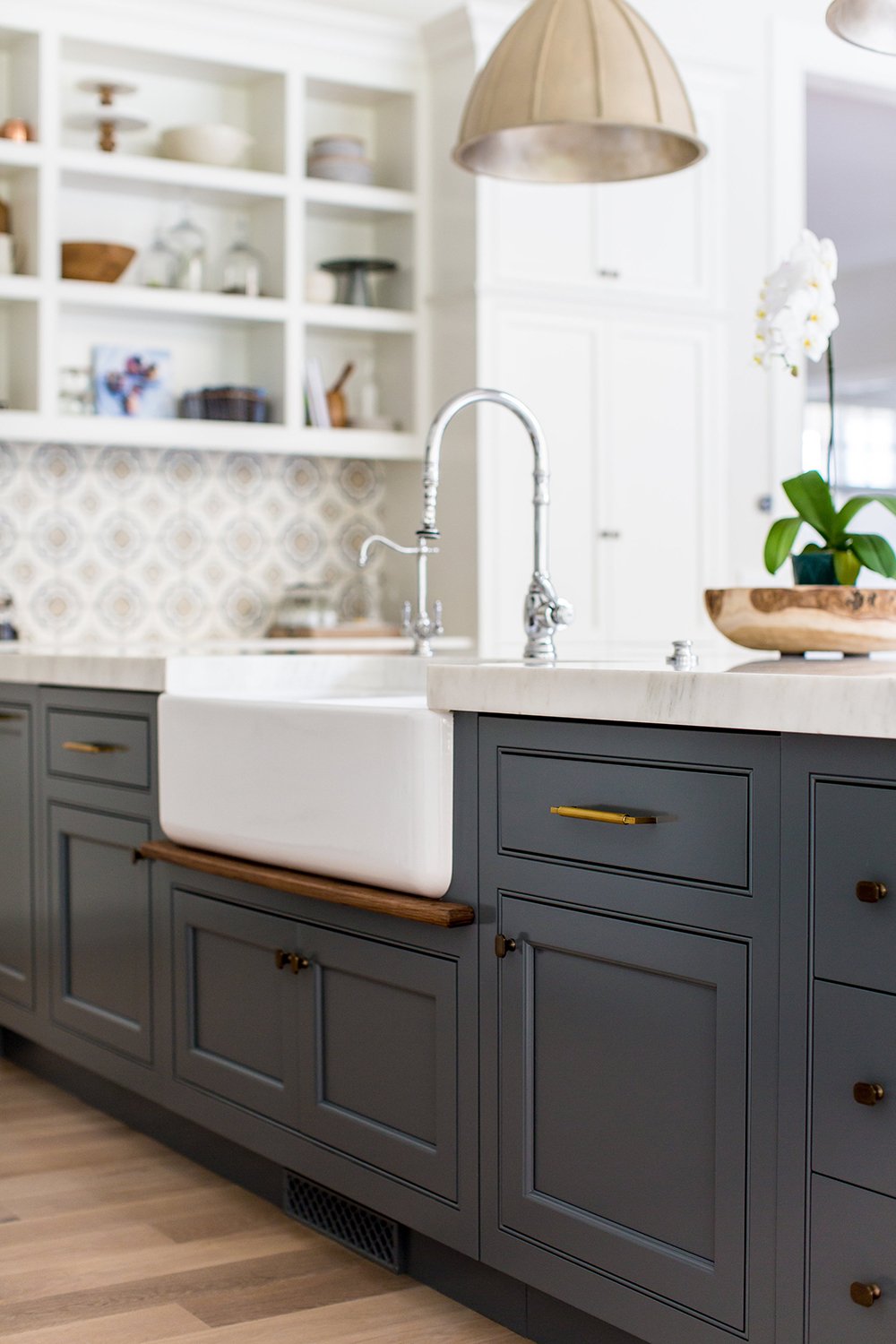
The drip rail does exactly what is sounds like. When water spills or drips down the front edge of your sink, rather than running down the face of the cabinetry, the rail catches the water or diverts it. In our first kitchen (which was white), I remember the lower sink cabinets always getting icky and dirty from the sink water. I sure wish I would’ve known then to add a drip rail because it would’ve made the space look better (and saved me some cleaning time) on the day-to-day.
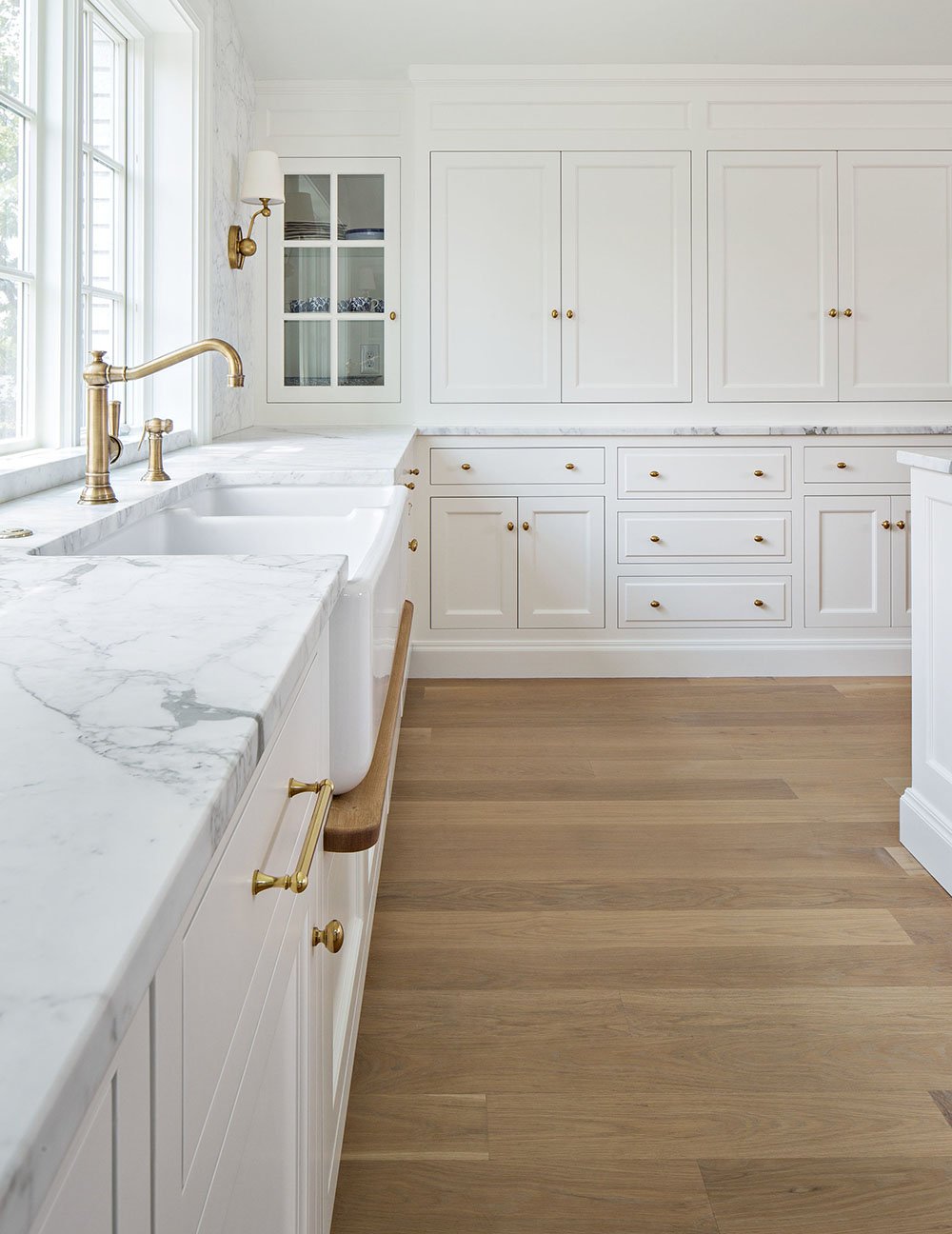
While it does have a practical purpose, I mostly love the way it looks. Remember when I talked about millwork giving you a sense of security and stability? I feel like the drip rail does that for the kitchen sink. Although it’s not a structural piece, it definitely makes the sink vignette feel more secure and balanced. A farmhouse sink can often feel too heavy (visually) for the cabinets beneath it, and this “ledge” gives the sink an aesthetically pleasing architectural element that makes it feel supported.

I’m a big fan of wood toned drip rails, that add warmth to surrounding paint grade cabinetry. It’s like adding a wooden dish brush to the edge of the sink on the countertop… that little organic element feels inviting and designerly.
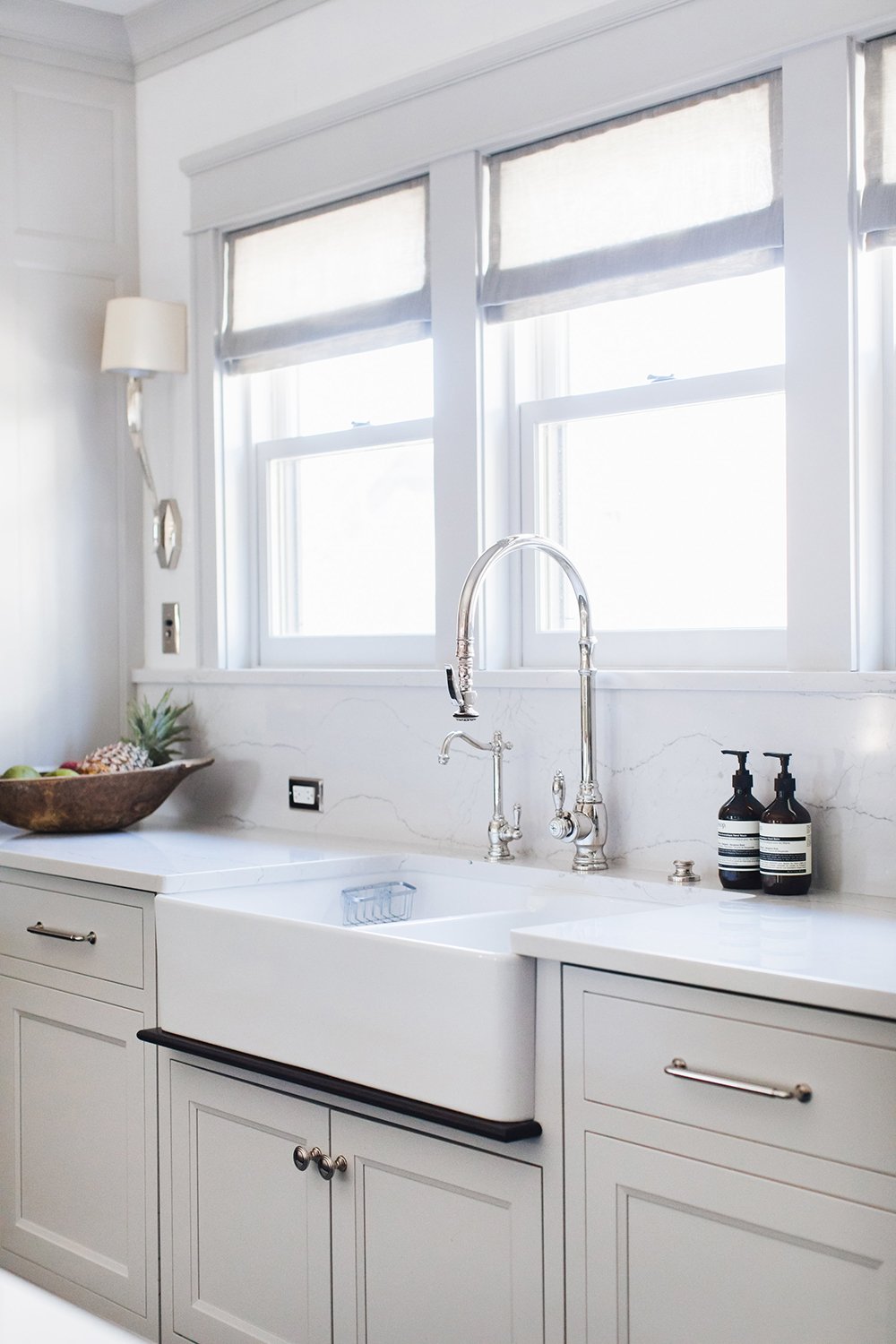
I’m a details person and this is one classic, easy detail I absolutely love in the kitchen! If you’re planning to renovate or update your space, definitely keep it in mind. I’m sure I’m going to be asked where to buy a drip rail, and unfortunately- this isn’t an item you can easily find online. It’s often a custom cabinetry add-on or hack. We added ours after the cabinets were in place, and it was extremely easy to make. It took Emmett and I under an hour to cut one, radius the edge, stain it, and install.
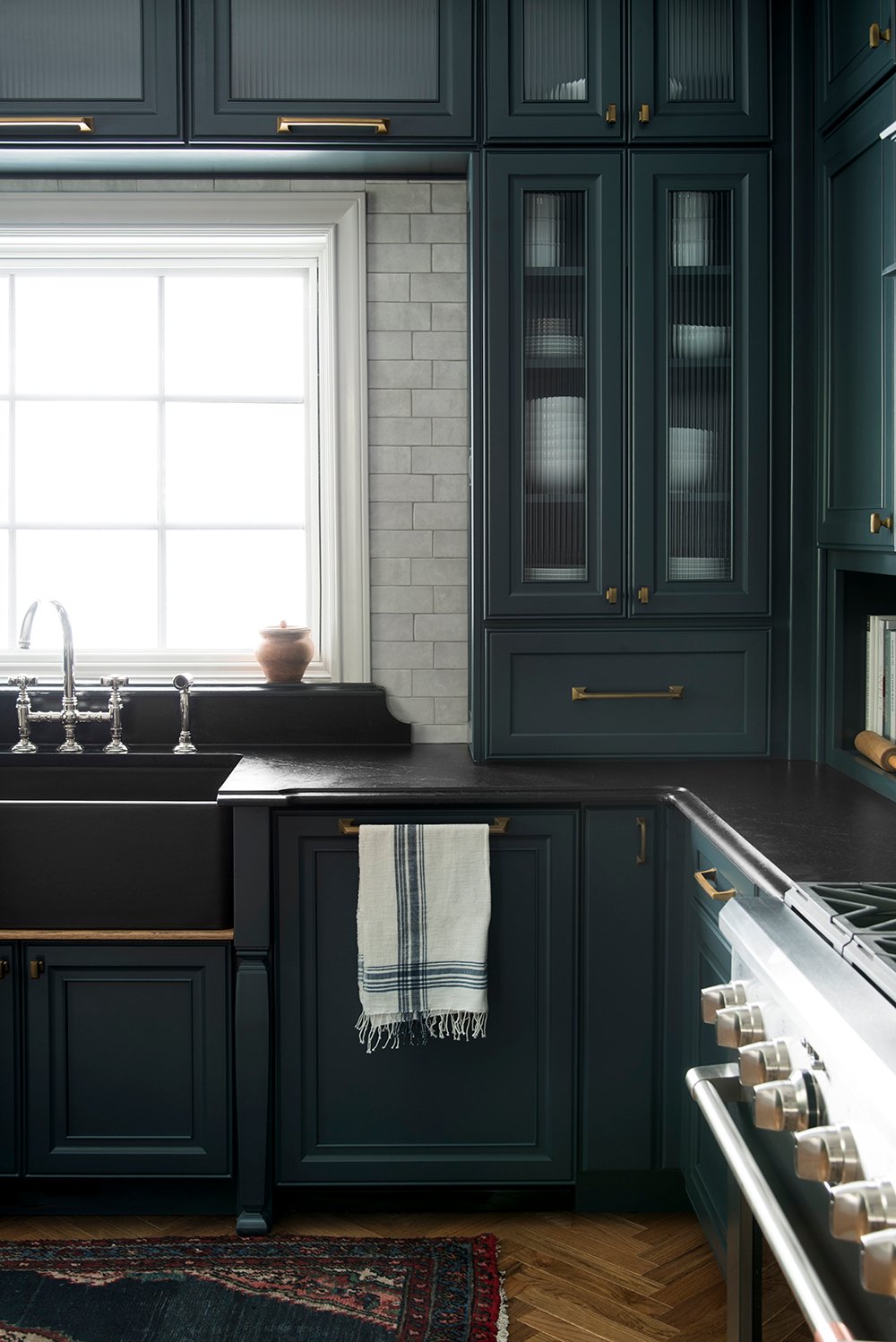 So what do you think? Are you into this trend? Have you been noticing more of these lately- or is this a totally new idea to you? I’d love to hear in the comments below!
So what do you think? Are you into this trend? Have you been noticing more of these lately- or is this a totally new idea to you? I’d love to hear in the comments below!
